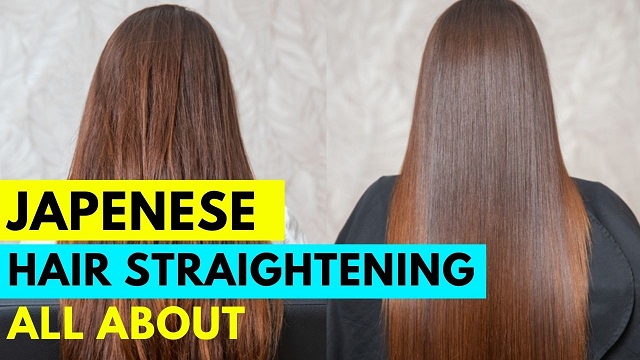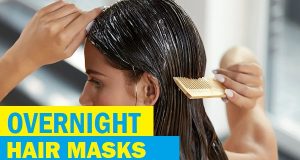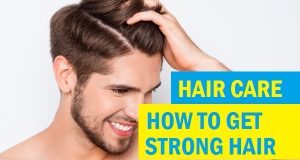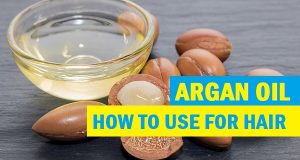Japanese Hair Straightening: This is a prominent method for achieving sleek, straight, and manageable locks. Moreover, this innovative technique, also known as thermal reconditioning, has gained immense popularity due to its ability to provide long-lasting straightening effects. In this detailed exploration at our blog today, we are going to share the different aspect of this amazing technique to achieve beautiful straight hair, it’s detailed process, advantages, considerations, and aftercare of Japanese hair straightening.
Understanding Japanese Hair Straightening
Japanese method of hair straightening is a cutting-edge method that transforms unruly, curly, or wavy hair into smooth, straight strands. It involves altering the internal structure of the hair to achieve a permanently straightened look. This process originated in Japan and has gained widespread acclaim for its remarkable and enduring results.
Know the Science Behind
The fundamental principle behind Japanese hair straightening is altering the hair’s natural structure through a combination of chemicals and heat. The process works by breaking down the hair’s hydrogen bonds responsible for its natural shape and texture. Once these bonds are broken, the hair is reshaped into a straight configuration. Afterward, a neutralizing agent is applied to reform the bonds in the new shape, locking in the straightened form.
Japanese Hair Straightening, also known as thermal reconditioning or Yuko System, has a fascinating history rooted in Japan. It emerged in the early 2000s and was developed by a Japanese popular hair stylist named Yuko Yamashita. Yuko’s innovation was inspired by a desire to help her clients with unruly, frizzy hair achieve sleek and straight locks. Her pioneering work led to the creation of the Yuko System, which eventually gained international recognition.
How it works?
Hair Structure and Hydrogen Bonds
To understand Japanese Hair Straightening, it’s crucial to grasp the basics of hair structure. Our hair consists of three layers and they are the cuticle, cortex, and medulla. The outermost layer, which is known as the cuticle, is composed of overlapping scales and within the cortex, we find the hydrogen bonds that are the critical element for straightening.
Hydrogen bonds are weak chemical bonds that hold the hair’s natural shape and texture. In curly or wavy hair, these bonds are abundant and contribute to the hair’s natural shape. During Japanese Hair Straightening, the goal is to break and reform these bonds to create a new, straight structure.
Heat plays a crucial role in the process. Hair is straightened strand by strand using flat irons, which are set at a specific temperature to ensure the hair takes on the desired straightened form. Moreover, this combination of chemical treatment and controlled heat application is what transforms curly or wavy hair into sleek, straight locks.
Advantages of Japanese Hair Straightening
1. Long-lasting Results and Durability
One of the most significant advantages of Japanese Hair Straightening is its ability to provide long-lasting results. Unlike some temporary straightening methods that only last until the next wash, Japanese Hair Straightening offers durability that can extend for several months. In many cases, clients enjoy the straightened effect for six months or even longer with proper care. Additionally, it also makes Japanese Hair Straightening a cost-effective option in the long run, as it reduces the need for frequent touch-up sessions.
2. Low Maintenance and Ease of Styling
After undergoing Japanese Hair Straightening, the maintenance required to keep your hair looking sleek and straight is minimal. Unlike some other straightening methods, your hair remains straight in various weather conditions, including humidity, which is a common culprit for causing frizz in natural hair. Many people appreciate the convenience of waking up to straight hair every day without the need for extensive styling. With straightened hair, daily styling routines become much simpler and less time-consuming.
3. Enhanced Hair Texture and Appearance
Japanese Hair Straightening not only provides straight hair but also enhances the overall texture and appearance of your locks. The treatment makes the hair smoother and shinier, contributing to a polished and well-groomed look. It effectively eliminates frizz, leaving the hair looking sleek and healthy. It’s common for individuals who undergo this treatment to feel more satisfied with their hair’s appearance and enjoy the added benefit of easier styling.
4. Boost in Confidence and Self-Esteem
Aesthetic transformations, such as those achieved through Japanese Hair Straightening, often lead to a boost in confidence and self-esteem. When you feel good about your hair and appearance, it can positively impact your overall self-image. Many people report feeling more self-assured and comfortable in social and professional settings with straightened hair.
Having hair that looks well-maintained and consistently sleek can reduce concerns about hair-related issues, allowing you to focus on other aspects of your life. Moreover, the confidence that comes with having straight, manageable hair can be a significant psychological benefit of Japanese Hair Straightening.
In summary, Japanese Hair Straightening offers a range of advantages, including long-lasting results, low maintenance, enhanced hair texture and appearance, and a boost in confidence and self-esteem. These benefits make it a compelling choice for individuals seeking a convenient and effective method to achieve and maintain straight hair.
Step By Step Procedure To Achieve Straight Hair
Understanding these steps is essential for anyone considering Japanese Hair Straightening, as it provides insight into the process and helps set realistic expectations. The Japanese Hair Straightening process can be summarized in several key steps. Before the actual Japanese Hair Straightening treatment begins, there are several important preparations:
1. Hair Assessment
Your stylist will assess the condition and type of your hair. This assessment helps in determining the appropriate treatment and understanding the specific needs of your hair.
2. Consultation and Assessment
The consultation phase is critical in determining the most suitable approach for your hair. Your stylist will consider factors such as your hair type, texture, length, and your desired outcome. They will also assess the overall health of your hair to ensure it can withstand the treatment.
3. Application of Chemicals
The Japanese Hair Straightening process begins with the application of a specialized chemical solution, which often contains ammonium thioglycolate. This solution plays a crucial role in softening the hair’s natural structure by breaking down the hydrogen bonds responsible for its shape.
4. Hair Straightening Process
After applying the chemical solution, your stylist will meticulously straighten each strand of your hair using flat irons. These irons are set to a specific temperature to ensure the hair takes on the desired straightened form. This step can be time-consuming, as it requires careful attention to detail to achieve a uniform straightening effect.
5. Neutralization and Final Touches
Following the straightening process, a neutralizing solution is applied. This solution serves to re-form the hydrogen bonds in the newly straightened configuration. It essentially “locks in” the straightened look. After the neutralization, your hair will be thoroughly rinsed to remove any remaining chemicals.
6. Rinsing and Conditioning
The hair is thoroughly rinsed to remove any remaining chemicals, and a conditioning treatment is applied to restore moisture and maintain the straightened structure.
7. Final Styling
The stylist performs a final blow-dry and styling session to ensure the client leaves with sleek, straight hair.
Time Required for the Procedure
The duration of a Japanese Hair Straightening procedure can vary depending on several factors, including:
Hair Length: Longer hair may take more time to straighten than shorter hair.
Hair Thickness: Thicker hair may require more time to ensure even straightening.
Skill of the Stylist: An experienced stylist may complete the process more efficiently.
On average, the treatment can take anywhere from 3 to 6 hours to complete. It’s important to allocate enough time for the procedure when scheduling your appointment.
Potential Sensations During the Treatment
During the Japanese Hair Straightening process, you may experience various sensations:
Warmth: The use of flat irons involves heat, which can cause a sensation of warmth on your scalp and hair.
Tension: As each hair strand is straightened, you may feel a gentle pulling or tension on your hair.
Chemical Odor: The chemicals used in the treatment can emit a mild odor, which is usually well-ventilated in professional salons.
It’s normal to have these sensations, but if you experience any discomfort or pain, it’s important to communicate with your stylist, as adjustments can be made to ensure your comfort throughout the procedure.
Considerations and Cautions
The Importance of Professional Expertise
Japanese Hair treatment for Straightening is a complex process that requires skill and experience. Choosing a trained and certified stylist who specializes in this technique is crucial. An inexperienced or unqualified stylist may not only fail to deliver the desired results but could also cause damage to your hair and scalp.
Hair Condition and Suitability for the Treatment
It is also to be noted that not all hair types are appropriate for this Japanese Hair Straightening treatment. Extremely damaged or weakened hair may not be able to withstand the chemical and heat processes involved in the treatment. Your stylist should assess the condition of your hair and advise you on whether it’s a suitable candidate for the procedure.
Risks and Potential Damage
While this Hair Straightening can provide impressive results, it’s not entirely risk-free. There is a potential for hair damage, especially if the treatment is not performed correctly or if your hair is already fragile. Damage may include hair breakage, dryness, or excessive thinning.
Before undergoing the treatment, it’s vital to address any concerns or misconceptions you may have. Common concerns include fears of hair damage, chemical exposure, or the permanence of the straightening effect. A qualified stylist should be able to provide clear explanations and alleviate any apprehensions.
Aftercare and Maintenance
1. Suggested Haircare Routine Post-Treatment
Maintaining the results of this hair treatment requires a proper aftercare routine. Here are some key post-treatment care tips:
Sulfate-Free Products: Use sulfate-free shampoos and conditioners designed for chemically treated hair. These products are gentler on your hair and help preserve the straightened effect.
Gentle Handling: Be gentle when combing or brushing your hair, as excessive force can lead to breakage. Use a wide-toothed comb or a brush designed for straight hair.
Avoid Excessive Heat: Minimize the use of heated styling tools like flat irons or curling irons to prevent additional damage to your treated hair.
2. Handling Regrowth and Touch-Up Sessions
As your hair grows, the new growth will be in its natural state, which may contrast with the straightened hair. This can create a noticeable demarcation line. To address this, you may need touch-up sessions every few months to maintain a uniform, straight appearance.
3. Recommended Products for Aftercare
Using products specifically formulated for chemically treated hair is essential for maintaining the health and appearance of your straightened locks. Look for products that provide moisture and protection to keep your hair hydrated and shielded from environmental factors.
Japanese Hair Straightening comes with considerations related to the expertise of the stylist, the condition of your hair, potential risks, and addressing common concerns. Aftercare and maintenance are equally important, involving a haircare routine, handling regrowth, and using suitable products to preserve the straightened effect and keep your hair healthy and vibrant.
Common Queries About Japanese Hair Straightening
Q1: What is Japanese Hair Straightening, and how does it work?
Japanese Hair Straightening, also known as thermal reconditioning, is a hair treatment method that permanently straightens curly or wavy hair. It works by altering the hair’s internal structure through the use of chemicals and heat, specifically by breaking and reforming the hydrogen bonds responsible for the hair’s natural shape.
Q2: Is Japanese Hair Straightening suitable for all hair types?
While this hair treatment can be effective for various hair types, it’s most suitable for individuals with curly, wavy, or frizzy hair. Extremely damaged or weak hair may not be suitable for this treatment.
Q3: How long does the Japanese Hair Straightening process take?
The duration of the process can vary depending on factors like hair length, thickness, and the skill of the stylist. On average, the treatment can take anywhere from 3 to 6 hours. It’s important to allocate sufficient time for the procedure when scheduling your appointment.
Q4: Are there any potential risks or side effects?
Yes, there are potential risks, including hair damage, dryness, or breakage, especially if the treatment is not performed correctly or if your hair is already in poor condition. These risks can be minimized by choosing a qualified stylist and following proper aftercare.
Q5: Is Japanese Hair Straightening permanent?
It is considered semi-permanent. The straightening effect typically lasts for several months, gradually fading as new hair grows in its natural state. Touch-up sessions are usually required every few months to maintain the straightened appearance.
Q6: How long will the results of Japanese Hair Straightening last?
The results can last for six months or more with proper care and maintenance. However, this duration may vary depending on individual individual hair growth rates and how well aftercare is followed.
Q7: Can I color my hair after Japanese Hair Straightening?
It’s generally recommended to wait at least two weeks after the treatment before applying hair color. This allows the hair to fully stabilize and reduces the risk of damage.
Q8: What’s the difference between Japanese Hair Straightening and other hair straightening methods?
Japanese Hair Straightening is known for its long-lasting results and ability to handle humidity, making it a popular choice for those seeking permanent straightening. Other methods, like keratin treatments or temporary straightening, offer different benefits and durations.
Q9: Will Japanese Hair Straightening make my hair completely straight?
The degree of straightness achieved can vary depending on your hair’s natural texture. Some clients may achieve a perfectly straight look, while others may have a slightly softer or wavier result. Your stylist can discuss your expectations during the consultation.
Q10: How should I prepare for Japanese Hair Straightening?
Prior to the treatment, it’s advisable to have clean, product-free hair. Avoid using styling products on the day of your appointment, and consider having a thorough consultation with your stylist to discuss your hair goals and any concerns.
 Tips and Beauty Site about Skin care, Hair care, Health, weight loss and lifestyle tips
Tips and Beauty Site about Skin care, Hair care, Health, weight loss and lifestyle tips







